Easy DIY dehumidifiers – 4 eco-friendly alternatives you can assemble yourself
HVAC experts share their DIY dehumidifier tips, to reduce humidity without increasing energy consumption at home


Colder weather is upon us, which means frosty mornings, festivities – and condensation.
Creeping into homes, this creates damp patches which allow mold and mildew to thrive. The best solution is a dehumidifier, but what if you don't have one, or aren't ready to make the investment?
Here, we spoke to HVAC experts to find out their best alternative options to reduce your home's humidity, with budget-friendly DIY ways to control humidity and curb condensation.
DIY dehumidifiers
1. Charcoal

Wondering how to use activated charcoal in your home? Josh Mitchell, HVAC technician and owner of AirConditionerLab, suggests using it as a DIY dehumidifier, as an alternative to your best dehumidifer.
He says, 'Activated charcoal absorbs moisture and odors, making it ideal for damp spaces. It's also inexpensive and readily available. Choose activated charcoal, as this type is best because its porous surface absorbs moisture effectively.'
Then, using a breathable container, such as a mesh bag, coffee filter, old sock, or plastic container with holes punched in the lid, place the charcoal container in areas with excess moisture. This might be in closets, or any basement ideas and bathroom ideas.
'Swap out the charcoal every two to four weeks, depending on the humidity level,' recommends Mitchell. 'When the charcoal stops absorbing moisture, it's time for a replacement.
All prices correct at time of publication.
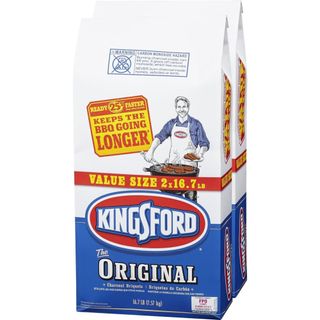
'Affordable and widely available, these work well for DIY setups when activated charcoal is hard to find,' says Mitchell.
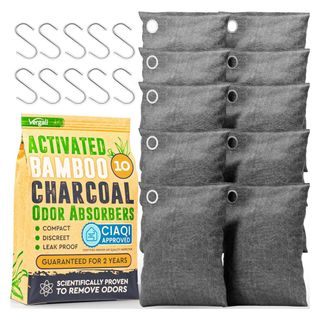
These activated charcoal odor absorbers effectively eliminate odors and damp, and purify air. They're also rechargeable – simply place them in the sun to release trapped moisture and they're good for reuse for up to two years.
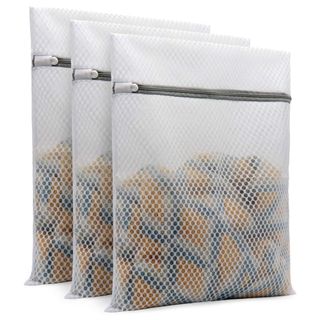
Designed for washing delicates, these breathable mesh laundry bags are perfect for making a DIY dehumidifier with activated charcoal.
2. Silica gel
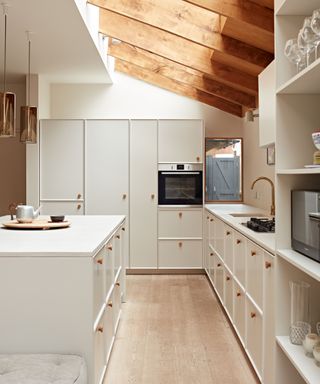
As a brilliant way to keep moisture out of a pantry, silica gel, such as the Dry & Dry Premium Silica Gel Packets available at Amazon, make an effective alternative to dehumidifers, says HVAC expert Mitchell.
'Silica gel absorbs moisture and doesn't create messes like other methods,' he explains. 'It's also compact, and reusable, making it cost-effective for long-term use.'
To use silica gel, you can either save packets from product packaging, or buy silica gel in bulk. Then, using a breathable fabric pouch, such as the Tatuo 3 x 4 Inches Muslin Bags Cotton Drawstring Bags available at Amazon, small mesh bag, or open container, place silica gel packs in moisture-prone spaces.
'These might be closets, drawers, or storage bins,' adds Mitchell. 'For larger areas, use bulk silica gel in containers. When the gel becomes saturated (often indicated by a color change if it's a color-indicating type), dry it out in an oven at 200°F for one to two hours to restore its moisture-absorbing properties.'
You can also use silica gel to dry flowers, to preserve beautiful blooms. However, wherever you place yours, keep out of the reach of children and pets as they are not to be ingested.

'These packets are reusable and include color indicators to show when they need recharging, making them a practical and low-maintenance option,' says Mitchell.
3. Rock salt
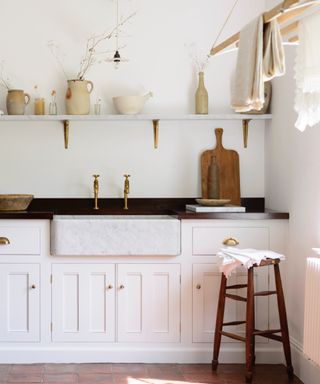
You can make a DIY dehumidifier using rock salt, says Steve Pacholski, brand president of Varsity Zone HVAC, who uses this cheap salt trick to get rid of condensation.
'Rock salt is a great option for larger spaces,' he suggests. 'Just grab a container like a bowl or bucket, fill it with rock salt (such as the Mutual Industries Rock Salt available at Walmart) and place it in a damp area, such as a basement or bathroom.
'Rock salt naturally pulls moisture from the air, and, over time, will start to clump as it absorbs water. You'll want to check on it regularly and either replace the salt, or dry it out in the oven on a low setting to reuse it.'
You can also use Himalayan salt, such as the Natural Himalayan Salt Chunks available at Walmart, for this, which can then be used to cleanse your home with salt, according to spiritualists.
4. Baking soda
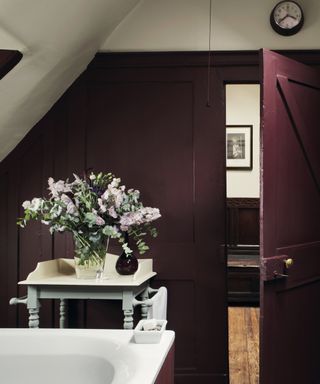
You may know about cleaning with baking soda, or how to use baking soda in laundry, but did you know it makes a great DIY dehumidifier, too?
HVAC expert Mitchell explains, 'Baking soda absorbs moisture and odors, making it ideal for smaller spaces with mild humidity issues. It's inexpensive, easy to find, and doubles as an air freshener,' to make your home smell nice.
To use baking soda, such as the Great Value Baking Soda available at Walmart, use a shallow, open containers such as a bowl, tray or baking dish, and pour a thin layer (about one to two cups) into the container, says Mitchell. Alternatively, if using this baking soda hack for closets, to banish odors and damp, you can just simply pop an open box in, which will also help to prevent damp and mold in a bedroom, too.
'The container should be placed in closets, bathrooms, or other small places where moisture is a problem,' adds Mitchell. 'Stir the baking soda every few days to keep it practical. Replace it entirely when it becomes clumpy, typically every one to two weeks.'
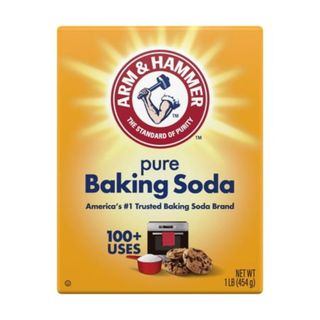
'This household staple is budget-friendly and effective for small-scale dehumidifying projects,' says Mitchell. 'You can also buy it in bulk for larger areas or frequent use.'
FAQs
What is the cheapest homemade moisture absorber?
If you're looking for ways to save money at home, rock salt is the way to go.
Not only is it affordable, it also has plenty of uses aside from absorbing moisture, from cooking in the kitchen to gritting a driveway. Therefore, it's a worthy product to bulk buy and have readily available.
Do salt lamps reduce humidity?
While salt lamps are a gorgeous way to make a bed look cozy and introduce soft lighting into your bedroom, unfortunately they aren't sufficient to significantly affect indoor humidity levels. Instead, pair them with another DIY dehumidifier, or invest in the real deal.
'DIY dehumidifiers work best in small areas,' says Mitchell. 'I recommend combining these methods with a small electric dehumidifier (such as the DAESUNG 60 OZ Dehumidifier available at Amazon) for more consistent results for larger spaces or homes with persistent moisture issues.'
Next, learn about dehumidifier mistakes to avoid.
Sign up to the Homes & Gardens newsletter
Design expertise in your inbox – from inspiring decorating ideas and beautiful celebrity homes to practical gardening advice and shopping round-ups.

Ottilie joined Homes & Gardens last year, after finishing a Master's in Magazine Journalism at City, University of London. With previous contributions in Livingetc and Motorsport Magazine, she produces content for the Solved section on the website, focusing on clever tips and tricks to keep your home beautiful, organized and clean. She also has an undergraduate degree in English Literature and History of Art from the University of Edinburgh, where she developed a love for inspiring interiors and architecture.
-
 10 common but little-known HOA fines to watch out for – and how to avoid them
10 common but little-known HOA fines to watch out for – and how to avoid themFrom sprinklers to garage doors and external pipes, your HOA contract may leave you open to a fine
By Eve Smallman Published
-
 Moving herbs outside now could kill them off, warns gardening expert – here's when to do it instead, plus tips for a smooth transition
Moving herbs outside now could kill them off, warns gardening expert – here's when to do it instead, plus tips for a smooth transitionPlacing these tender plants in your yard too early risks their demise from late frost
By Tenielle Jordison Published
-
 10 common but little-known HOA fines to watch out for – and how to avoid them
10 common but little-known HOA fines to watch out for – and how to avoid themFrom sprinklers to garage doors and external pipes, your HOA contract may leave you open to a fine
By Eve Smallman Published
-
 I’m a homes editor and these are the 4 vital storage items I’m 'adding to cart' this spring – and why you should too
I’m a homes editor and these are the 4 vital storage items I’m 'adding to cart' this spring – and why you should tooI've learned a few hard lessons in recent weeks and these storage solutions will help
By Punteha van Terheyden Published
-
 7 things you should repair instead of replace in your home – and how to complete the job well yourself in a few simple steps
7 things you should repair instead of replace in your home – and how to complete the job well yourself in a few simple stepsEasy steps for fixing common household items
By Eve Smallman Published
-
 Why does my carpet feel damp? Property experts reveal the 3 causes and how to fix them properly to avoid mold
Why does my carpet feel damp? Property experts reveal the 3 causes and how to fix them properly to avoid moldCondensation doesn't just gather on your windows
By Dan Fauzi Published
-
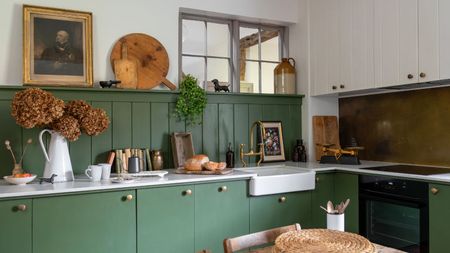 The 5 things you should never recycle at home – 'most people don’t realize' how damaging it can be, experts warn
The 5 things you should never recycle at home – 'most people don’t realize' how damaging it can be, experts warnOne wrong move can make the whole batch redundant, experts warn
By Ciéra Cree Published
-
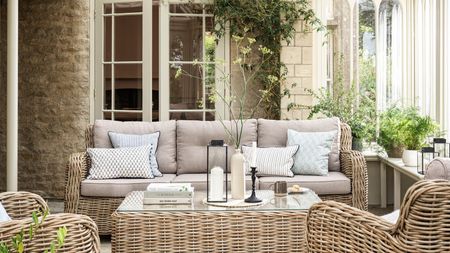 6 things people with clean sunrooms always do – expert tips to make the most of your sunroom this spring
6 things people with clean sunrooms always do – expert tips to make the most of your sunroom this springFrom dusting the tracks to rotating fabrics, these are the simple steps to a sparkling sunroom
By Andy van Terheyden Published
-
 8 things secretly making your allergies worse at home, according to immunologists – and what to do about each
8 things secretly making your allergies worse at home, according to immunologists – and what to do about eachIs something in your home exacerbating your allergies?
By Rebecca Shepherd Published
-
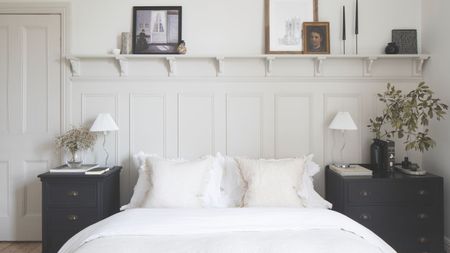 I was struggling with high humidity and mold in my basement bedroom before trying this affordable $40 dehumidifier from Amazon
I was struggling with high humidity and mold in my basement bedroom before trying this affordable $40 dehumidifier from AmazonPlus, expert-approved tips for preventing mold and moisture from returning
By Ottilie Blackhall Published